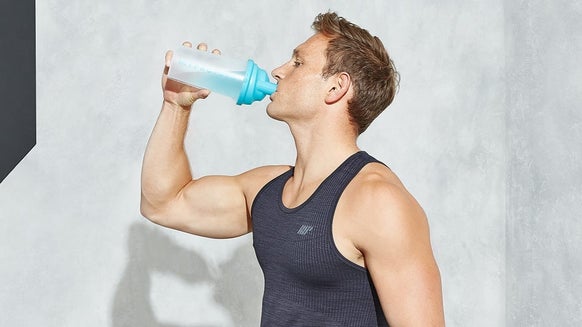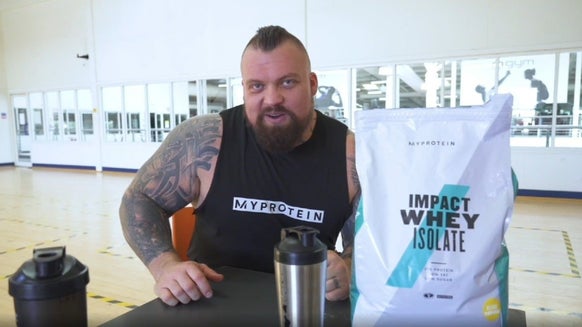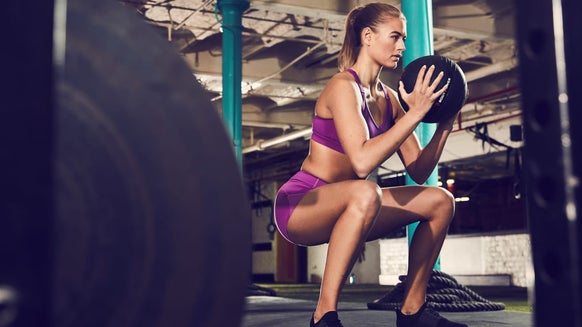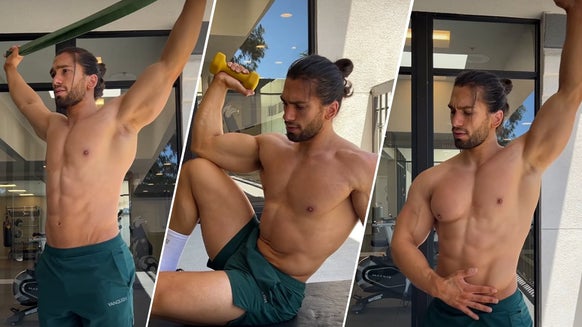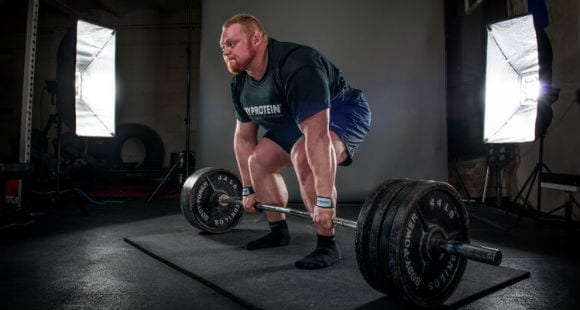
The deadlift is an absolutely essential exercise for anyone who lifts weights. It recruits more muscles than any other movement, targeting the posterior chain from the upper back to the hamstrings, builds the core, and strengthens grip. Deadlifting is not strictly reserved for professional athletes and elite powerlifters. The casual gym-goer can massively benefit from this exercise, as well. However, not everyone can deadlift the same way. Nor should they.
Deadlift Variations
The conventional barbell deadlift is a great exercise, but it’s not for everyone. Those with a history of back issues or poor mobility may find it painful and unsafe to do the movement correctly. Doing the conventional deadlift exclusively also limits the potential strength benefits that come with other forms of the movement. Here are 4 barbell deadlift variations to try for safer, more effective workouts.#1 Sumo Deadlift
The sumo deadlift is a variation that uses a wider stance and narrower hand placement to shift more of the work from your lower back to your hips and quads. Here's how to perform: 1. Set up with the bar close to your shins, feet wider than shoulder-width, and toes pointed outward. 2. Bend down to grip the bar at shoulder-width. Your knees should be pushed out and track directly over your feet. 3. Before lifting the bar off of the ground, take a deep breath, brace your core, and engage your lats. 4. As you lift the bar upward, drive through your heels, keep your back flat, and thrust your hips forward. 5. Briefly pause at the top, then lower the bar in the same manner you lifted it, keeping the bar close to your body at all times.Benefits
? Less stressful on the lower back
? More hip and quad dominant
? Shorter range of motion
? Requires less mobility to properly execute
#2 Snatch Grip Deadlift
The extra-wide grip on a snatch grip deadlift increases the range of motion and further engages the upper back and traps. 1. Set up with the bar close to your shins, feet at (or just narrower than) shoulder-width, and toes pointed slightly outward. 2. Grip the bar at, or near, the outer rings of the barbell. 3. Before lifting the bar off of the ground, take a deep breath, brace your core, and engage your lats. 4. As you lift the bar upward, push through your heels, keep your back flat, and thrust your hips forward. 5. Briefly pause at the top, then lower the bar in the same manner you lifted it, keeping the bar close to your body at all times.Benefits
? More emphasis on the upper back and traps? Extended range of motion? Increases leg drive? Improves grip strength#3 Romanian Deadlift
The Romanian deadlift (RDL) requires a fixed-knee position to isolate the hamstrings and glutes. It is unique because, unlike most other deadlift variations, the the RDL does not start from a “dead” position on the floor. Instead, the RDL begins from the upright position with the bar in hand, and the first motion is the eccentric portion of the lift rather than the concentric. Because the eccentric portion of this movement can be emphasized, it is excellent for hypertrophy. 1. Hold the bar at about shoulder-width, with your feet just narrower, and the let the bar rest on your thighs. Keep your knees slightly bent throughout the movement.
2. Take a deep breath, brace your core, and hinge your hips backward. 3. As your hips sit back, drop the torso, keep your back flat, chest up, and shoulders back. 4. Lower the bar only as far as you can go without further bending your knees or rounding your back. You don’t have to touch the ground. 5. Briefly pause at the bottom, then thrust your hips forward and return to the starting position.Benefits
? Increases hamstring, glute, and lower back development? Better for hypertrophy (muscle building) because of eccentric phase? Improves hip mobility and hamstring flexibility#4 Deficit Deadlift
A deficit deadlift is performed while standing on an elevated surface, which increases range of motion, ultimately making the lift more difficult. This variation is often used to help lifters improve their speed off of the ground and recruit more leg drive. 1. Stand on a plate, box, mat, or other stable object (1”-3”) with your feet at, or just narrower than, shoulder-width. 2. Set up with the bar close to your shins, and grip the bar at about shoulder-width. 3. Before lifting the bar off of the ground, take a deep breath, brace your core, and engage your lats. 4. As you lift the bar upward, push through your heels, keep your back flat, and thrust your hips forward. 5. Briefly pause at the top, then lower the bar in the same manner you lifted it, keeping the bar close to your body at all times.Benefits
? Increases range of motion? Increases time under tension? Targets quads, glutes, and hamstrings? Strengthens conventional deadlift from the floorTake Home Message
The deadlift is an important exercise that should be part of your training regimen. But remember there’s more than one way to do it. Using variations of the conventional barbell deadlift like the sumo, snatch grip, Romanian, and deficit deadlift will better ensure safety and improve your long-term progress and overall strength. 





